PPE Workwear
PERSONAL PROTECTIVE EQUIPMENT
Personal protective equipment (PPE) used in work environments as well as leisure activities must meet high quality standards to effectively ensure human safety.
Our products are manufactured in accordance with international quality standards and recent technological changes.

This standard guarantees the garment worn two very distinct characteristics:
- The outer fabric of the garment must be antistatic, i.e. it does not conduct electricity and therefore protects against electrocution by contact, with an electric wire for example.
- The inside of the garment must contain a carbon wire grid to allow dissipation of electrostatic charges.

This type of protective clothing is intended to protect the wearer against splashes (small splashes of molten metal), short-term contact with a flame, radiant heat from an electric arc used for welding, and other related processes.

The protective clothing concerned by standard NF EN ISO 11612 (protective clothing against heat and flames) provides worker protection against brief contact with flames and against at least one type of heat.

The EN 13034 standard relates to the minimum requirements applicable to protective clothing against chemicals,protective clothing against aerosols, sprays and small liquid splashes in areas where the chemical risks are rather low.

This standard determines the characteristics of protective clothing against bad weather for temperatures above -5°C.
Two essential characteristics are retained in the standard: the impermeability of the garment and the evaporative

Protective clothing intended to protect the body against moderately cold environments – Temperature down to -5°C.

EN 13758-2 is a standard for protection against harmful UVA and UVB rays from the sun. Garments certified to this standard are marked with an ultraviolet protection factor (UPF) corresponding to their protective power. The degree of protection depends on many factors such as the thickness of the fabric, its opacity and its color. The protective effect of the textile is also influenced by wear, washing and stretching of the garment.
Choosing a 13578-2 certified garment allows you to reduce the risk of skin damage caused by the sun's rays.

The standard specifies requirements and test methods for materials and articles of clothing used for protective clothing against the thermal hazards of an electric arc.
IEC 61482-2 does not take into account the risks of electric shock, sound effects, UV radiation, metal fragments, toxic substances released.

The standard sets the characteristics of clothing used to signal wearers, by day, but also by night in the light of headlights.
The performance of the garment is expressed by class, in minimum surface of fluorescent and retro material.
- It ensures daytime visibility (orange, yellow, red).
- They ensure visibility at night and in a dark environment.

The standard defines the requirements to protect the knees for all professional activities requiring work on the knees.
